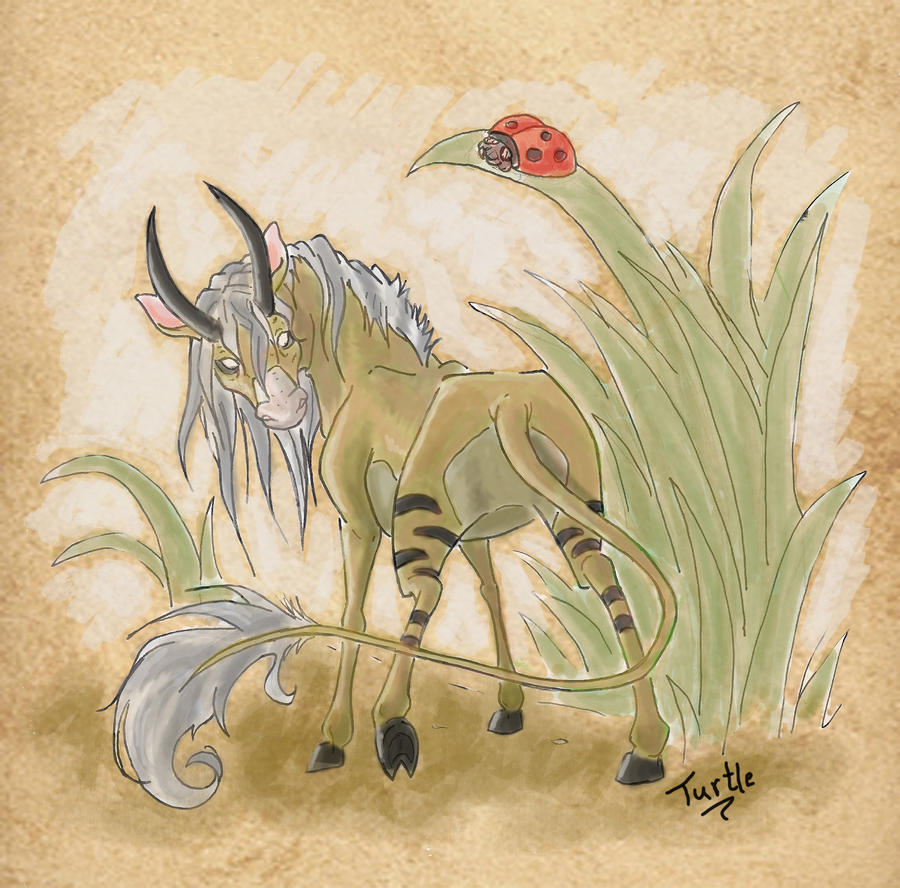There are quite few people on here who want to write fantasy novels with black characters, maybe this will help. add on if you find any.







Anyanwu
Alusi of the sun, her name in Igbo means eye of the sun. She is one of the important deities in the Igbo religion of Odinani. Anyanwu represents the perfect image of what people should aspire to be
Amongst Ndi Igbo, the Sun was referred to as Anyanwu (An-yan-wew). This is a combination of two different words. The first word, anya means eye. The second word, anwu, means light. Together, the phrase reads as “eye of light.”
Anywanu played a very large role in life of the Umunri. “Nri people believed that the sun was the dwelling place of Anyanwu (The God of Light and Agbala (The Holy Spirit). They believed Agbala to be the collective spirit of all holy beings (human and nonhuman). The Holy Spirit was a perfect agent of Chi-Ukwu or Chineke (the Creator God).

Huspalim
(Art by Lady Deuce)
A large marmot that had red-spotted skin an extraordinary large head with a monkey’s face. It’s rumoured to have lived in Ethiopia where it was captured and eaten. Its meat was too tough to eat so the creature needed a lot of beating before its flesh was tenderised.
Huspalim

Boo Hag (African American)
According to the legend, Boo Hags are similar to vampires. Unlike vampires, they gain sustenance from a person’s breath, as opposed to their blood, by riding their victims.
They have no skin, and thus are red. In order to be less conspicuous, they will steal a victim’s skin and use it for as long as it holds out, wearing it as one might wear clothing. They will remove and hide this skin before going riding.
When a hag determines a victim is suitable for riding, the hag will generally gain access to the home through a small crack, crevice, or hole. The hag will then position themselves over the sleeping victim, sucking their breath. This act renders the victim helpless, and induces a deep dream-filled sleep. The hag tends to leave the victim alive, so as to use them again for their energy. However, if the victim struggles, the hag may take their skin, leaving the victim to suffer. After taking the victim’s energy, the hag flies off, as they must be in their skin by dawn or be forever trapped without skin. When the victim awakes, they may feel short of breath, but generally the victim only feels tired.
An expression sometimes used in South Carolina is “don’t let de hag ride ya.” This expression may come from the Boo Hag legend.
It was also said that if a person placed a broom beside their bed before going to sleep it would prevent the Hag from riding them. Hags supposedly would be distracted by counting the straws of the broom and would not get to ride the person sleeping before the sun rose the next morning.

Waterlord
A seven-headed sea creature that causes droughts when it is insulted. A tale from the Fulani of Mali in Africa tells of a story about a girl called Jinde. Each day Jinde would carry a jug of water on her head and take some water from the river to bring home. One day the Waterlord rose from the waters and captured Jinde who then forced her to marry him. Despite being in love with another she had no choice but to become its spouse. Waterlord decided to let Jinde go back home to say goodbye one last time to her mother. But when she came back home, her parents refused to open the door saying that her home was with the monster now. She then went to the house of her old boyfriend who then took his father’s sword and protected her as they went to the lake. The Waterlord raised its head above the water to kill the young man but Jinde’s boyfriend was victories in the fight and severed off the monster’s seven heads.
This is alternate version to the one I read.








 ) etc etc etc....
) etc etc etc....























